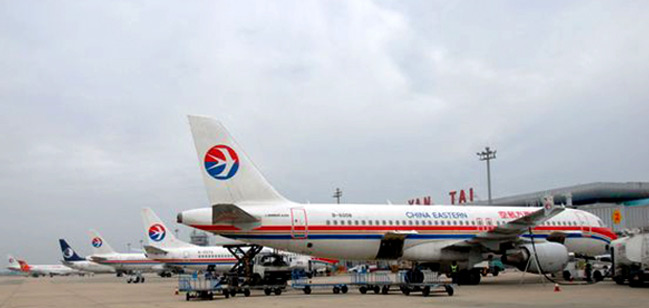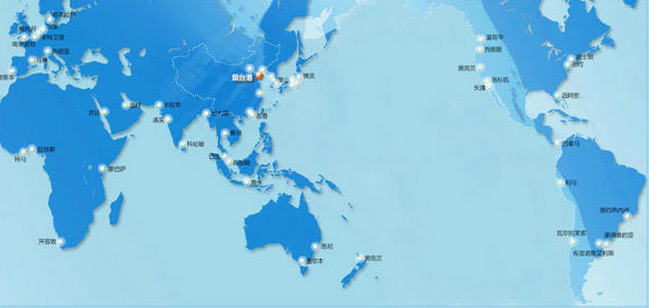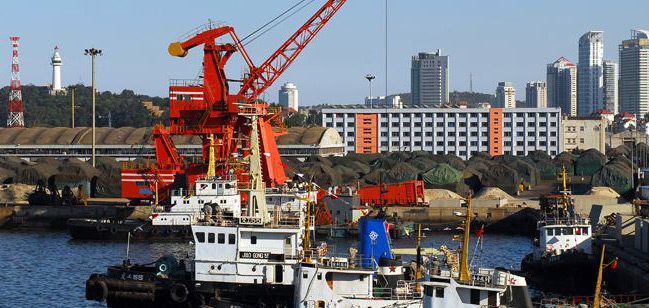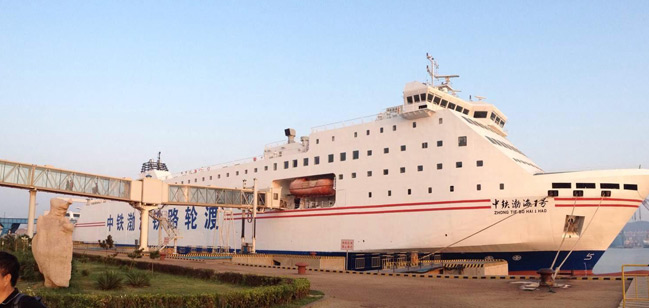Advantages

Yantai Port is in current contact for navigation and trading with more than 150 ports from over 100 countries and regions.
Situated in the west coast of the Pacific Ocean and north of Shandong Peninsula, Yantai Port faces Liaodong Peninsula, Japan and Korea .across the sea. It is one of the leading terminal ports in China.
Located at the south shore of the Bohai Sea Rim and the estuary of the Bohai Bay, which is adjacent to the main international waterway, Port of Yantai faces to Japan, South Korea and the economically developed regions in Southeast Asia.
Backing on the vast economic hinterland of Beijing, Tianjin, Shandong and He’nan, Port of Yantai holds an optimum location as a transshipment port on the rim of the Bohai Sea. On this ground, Port of Yantai enjoys a broad development space in terms of its perfect geographical location.

A long-distance petroleum pipeline (from Western Yantai Port Area to Zibo City of Shandong Province, with a length of 540 km) has been built up, passing through six cities such as Yantai, Qingdao,Weifang, Dongying, Zibo and Binzhou. It is designed with an annual transferring capacity of 15 million tons for fuel oil or 20 million tons for crude oil.
The pipeline project was formally put into operation at the end of 2016, and now a comprehensive four-in-one transportation network, which consists of railway, highway, waterway and pipeline, has been eventually formed.

Yantai Penglai International Airport, which is located in the backup area of Western Yantai Port Area, has been completed for operation in May 2015, with a capability of 10-12 million passengers per annum.

Port of Yantai has opened regular shipping lines with South Korea, Japan and countries in Southeast Asia, Europe and America.
Nowadays Yantai Port has established shipping and trading links with over 150 ports in more than 100 countries and regions all over the world.

Through the port excess road, all the port areas of Yantai are directly linked with Shenyang-Haikou Expressway (G15) and Rongcheng-Wuhai Expressway (G18).
And then integrated in the highway networks of Shandong Province and the whole country, enjoying perfect transportation conditions.

The Dezhou-Longkou-Yantai Railway Line spans across the north of Shandong Peninsula, and forms into a new cargo transportation passageway together with Shijiazhuang-Dezhou Railway, Shijiazhuang-Taiyuan Railway and Taiyuan-Zhongwei (Yinchuan) Railway.
As one of the Grade I electric national railways, it is fully completed for traffic at the end of 2017. It is designed with an annual transportation capability of 28 million tons. After the double-track is fulfilled in the future, its overall transportation capability will reach up to 130 million tons per annum.

Port of Yantai enjoys unique advantage in railway transportation. Through Lancun-Yantai Railway and Dezhou-Longkou-Yantai Railway lines, the port is directly linked with the interior hinterlands in Shandong, Hebei and Shanxi Province.
The Lancun-Yantai Railway Line starts from Port of Yantai, passes through the south of Shandong Peninsula, connects with the Jiaozhou-Jinan Railway Line and is eventually integrated in the National Railway Network. As one of the Grade I double-track electric national railways, it is designed with an annual transportation capability of 100 million tons.

And the second phase covers an area of 1.35 square kilometers (including a port operation zone of 0.9 square kilometers). It is recognized as an area under special customs supervision, which is featured by the top level, most preferential policies, completed functions and outstanding advantages in terms of its location.

As the 13th bonded port area approved by the State Council of China, Yantai Bonded Port Area is the first one transformed by an Export Processing Zone adjacent to the port.
The Bonded Port of Yantai covers an planned area of 7.26 square kilometers, of which the first phase covers an area of 4.86 square kilometers (including a port operation zone of 2.35 square kilometers),

Furthermore, Port of Yantai has built up its own fleet of vessels through several ways (for instance, procurement, share acquisition and operation through joint ventures), such vessels are designed with specific functions which are necessary for river-sea transportation.
Basing upon the above resources and conditions, Port of Yantai has successfully developed a new logistics mode, under which the specifically-designed vessels deliver bulk cargo from the major port areas (such as Western Yantai Port Area) to the medium/small sized ports in the west, and then ship back with containers.

Up to now, investment and operation have been conducted in six regions such as Laizhou, Zhuwang, Shouguang, Guangli, Zhanhua and Wudi. On this ground, a port cluster has been established, under which the deep-water terminals (in major port areas such as the Western Port Area) act as the pivot.
And the small terminals in the other ports act as the functional links in the whole network.

Port of Yantai is endowed with rich resources in terms of coastal line, of which the four port ares (Zhifu Bay, Western Port Area, Penglai and Longkou) are respectively located in the northern part of Shandong Peninsula from east to west.
In the interest to build up a perfect logistics network, Port of Yantai has commenced port development along the southern shore of Baohai Bay and towards the west.
